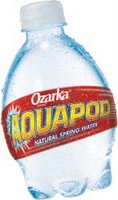 Are your employees blogging on your brand’s behalf? Do you dare let them? Why would you? Is it a control issue?
Are your employees blogging on your brand’s behalf? Do you dare let them? Why would you? Is it a control issue?Say that you’ve already been thinking about that hottest and most alluring of marketing tools, “word of mouth.” Blogs are virtual versions of word-of-mouth advertising. Anyone can post a blog and use it to share a message or a point of view. By “anyone,” I do mean anyone – individuals, business gurus, even employees.
Especially employees, when they can help fulfill your marketing objectives, internal and external.
Introducing Hugh MacLeod and his “porous membrane” – one of the best and most graphic arguments for insider blogging:
The diagram above represents your market, or ‘The Conversation.’ That is demarcated by the outer circle ‘y.’ There is a smaller, inner circle ‘x. The entire market, the ‘conversation,’ is separated into two distinct parts, the inner area ‘A’ and the outer area ‘B.’
Area A represents your company, the people supplying the market. We call that ‘The Internal Conversation.’ Area B represents the people in the market who are not making, but buying. Otherwise know as the customers. We call that ‘The External Conversation.’ So each market from a corporate point of view has an internal and external conversation. What separates the two is a membrane, otherwise known as ‘x.’
Every company’s membrane is different, and controlled by a host of different technical and cultural factors.
Ideally, you want A and B to be identical as possible, or at least, in sync. The things that A is passionate about, B should also be passionate about. This we call ‘alignment.’ A good example would be Apple. The people at Apple think the iPod is cool, and so do their customers. They are aligned.
When A and B are no longer aligned is when the company starts getting into trouble. When A starts saying their gizmo is great and B is telling everybody it sucks, then you have serious misalignment. So how do you keep misalignment from happening?
The answer lies in ‘x,’ the membrane that separates A from B. The more porous the membrane, the easier it is for conversations between A and B, the internal and external, to happen. The easier for the conversations on both sides of membrane ‘x’ to adjust to the other, to become like the other.
And nothing, and I do mean nothing, pokes holes in the membrane better than blogs. You want porous? You got porous. Blogs punch holes in membranes like it was Swiss cheese.
When your employees are, in fact, “missionaries” for your company and your brand, you have the chance to create an inside-outside market conversation that is powerful and believable.
Simple though it appears, MacLeod’s “porous membrane” is dramatic. Just in case, though, let’s back it up with some advice from a leading experiential marketing company, Jack Morton. The worldwide firm has a White Paper you might find valuable. In part, it suggest that you should:
Encourage Employees to Blog: Encouraging team members (or better yet, leadership) to create their own blogs will enable readers to experience the personal side of your business. At the same time, you can give customers (or investors) an ‘inside scoop’ on where your company is headed. Technical or development experts can discuss the latest goings on in R&D, while your C-level discusses the future of your business. Your brand can gain quick credibility by offering the chance to have conversations with executives or experts. And each has the freedom to tell their own version of the brand story – lending it the human touch that blogs are known for.
Create a Corporate Blog: Your brand’s blog can broadcast messages to your external consumers, partners and industry-watchers. Or, it can be used to communicate internally with your own employees and teams. Much like a newsletter or other ‘push’ channel, you can use a blog to talk to anyone. The difference is that dialogue via blog is quick and specific – so blogs become both a ‘push’ and ‘pull’ channel. Users come back because they are genuinely interested in the content, while brands have a portal for sharing the latest news as it happens.
Whether you prefer the elegance of Hugh MacLeod or the text-driven advice of Jack Morton, recognize that internal blogs are like newsletters: they demand a commitment. New entries should be posted frequently, even daily if possible. ‘The Conversation’ must be sustained.
The maximum power of a blog is that there is a live individual behind it, just like word-of-mouth. The live individual is one of your own employees and that makes the blog personal.
Personal involvement makes insider blogging compelling and influential. But remember that the membrane ought to be porous. The two-way nature of blogging – even if it tests the limits of your control – is what makes it ultimately believable.













 You know and I know that a good marketer can look at a “thing” and figure out what the benefits are for our various audiences or prospects. Transparency, for example, answers a major complaint from healthcare’s stakeholders (including physicians) and it is very, very marketable.
You know and I know that a good marketer can look at a “thing” and figure out what the benefits are for our various audiences or prospects. Transparency, for example, answers a major complaint from healthcare’s stakeholders (including physicians) and it is very, very marketable.

